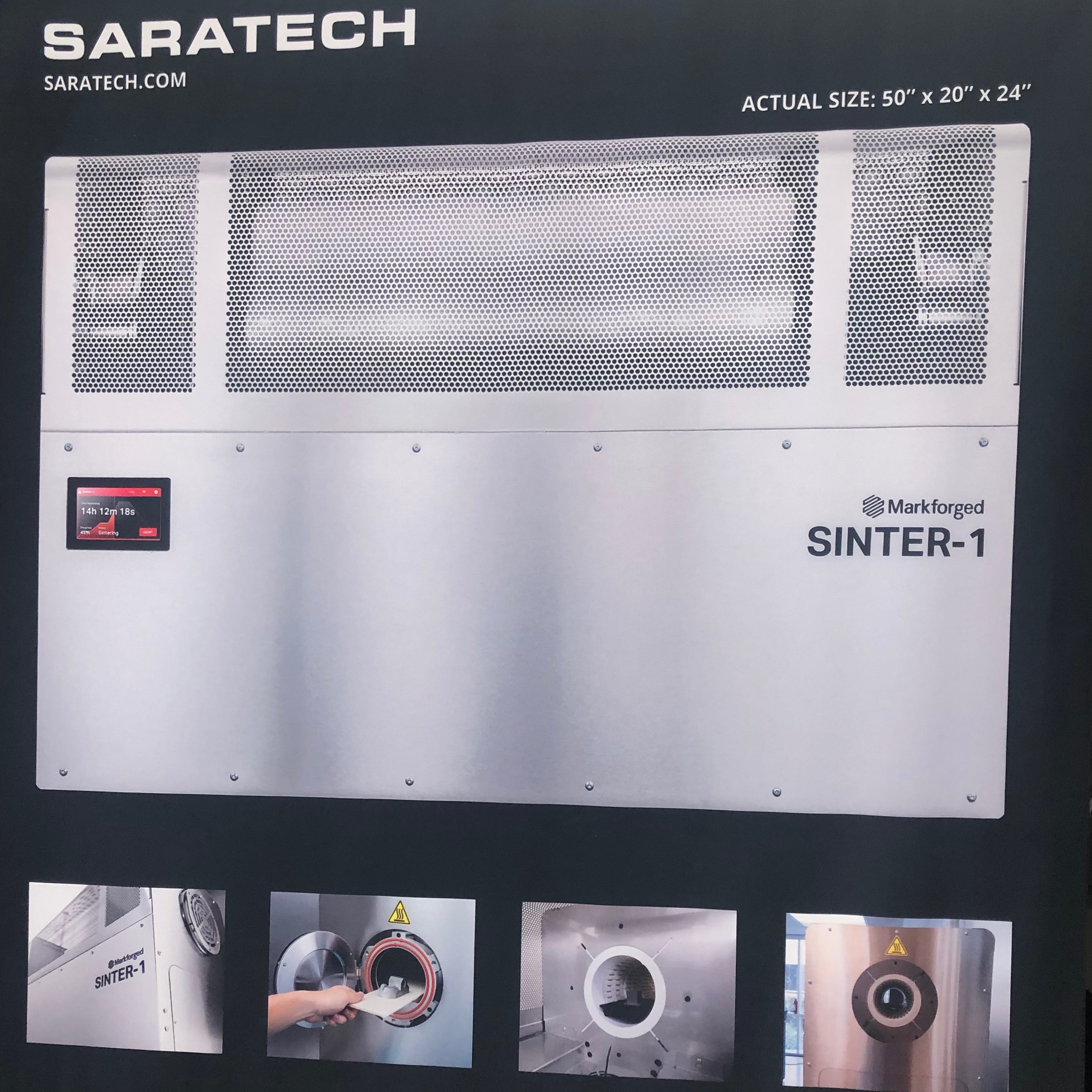
Technology Bridge’s newest addition, Saratech, hosted a metal 3D printing technology open house on Wednesday, May 15th. They did not disappoint.
“Saratech is Siemens and HP’s number one partner in the Americas. We offer a variety of technologies to make sure we can fit a customer’s need, as opposed to trying to shoehorn an application into a particular technology. We offer Bigrep, Markforged, HP, and UnionTech,” explained Jeff Rickey, Saratech’s national sales manager.
Each manufacturer’s technology is unique and offers customers different strengths and features. Bigrep offers large formats and can handle multi-thermoplastics. Markforged offers high strength, continuous fiber, and has an expert grasp of composites and metals. HP offers high speed, production quantity, and is ideal for working with plastics. UnionTech is highly detailed and offers proven stereolithography technology. There’s something for everyone.
“Saratech utilizes different additive manufacturing processes, from powder bed fusion and directed energy deposition to material extrusion and binder jetting,” continued Jeff.
Jeff did a wonderful job exhibiting his unrivaled expertise in 3D printing technologies by explaining, in detail, what each additive manufacturing technology offers and how they are unique.
Directed energy deposition (DED) fuses either metal wire or a powder stream with an energy source to deposit material on a part. It is an often-sought technology due to the high speed of its deposition.
Powder bed fusion uses lasers or electron beams to weld powdered material on a powder bed. This process is ideal for material containing lots of overhangs (parts that stick out).
Material extrusion uses a nozzle to produce heated material that is deposited on its bed in layers. This process is the most affordable, as it is used by most hobby 3D printing machines.
Binder jetting differs from the other processes because it is the only one that does not employ heat while it is in production. This method also does not require a build plate, as parts are more dependent on powder. Binder jetting is prime for printing large pieces of material.
The open house featured a fun and informative presentation from Markforged’s associate application engineer, Catherine Pomorski. Catherine vigilantly fought a cold while managing to show the room of about 40-plus inquiring minds the kind of work Markedforge produces.
“Markforged was founded to change the way products are made. We’ve created the world’s only ecosystem of plastic, metal and composite 3D printers so people can focus on building products,” explained Catherine.
Catherine proceeded to show the room how Markforged provided thermoset mold for a company named Humanetics. Thermoset molding is a process where plastics are heated at high temperatures and molded into a desired shape.
“Markforged was faced with the challenge of creating a thermoset mold that could withstand significant clamping force while heated to 220 degrees. Markeforged’s solution was to use Onyx and HSHT printed molds that could withstand temperatures up to 302 degrees to replace what was once an inefficient, out-of-house silicone process,” Catherine proudly explained.
All in all, the event was a big success. We were treated to two informative, entertaining presentations, great food, and we even got to see 3D printers in action. We were able to touch and really appreciate the intricacies and details of 3D printed materials. Even the smallest of 3D printed parts was as durable as metal, as detailed as the original part, and as inspiring as a work of art. Saratech’s materials manager, Chad Devine, took questions from inquisitive engineers and put in a lot of hard work setting up all the giant machines for everyone to examine and appreciate.
If this turnout was any indication, it is without any doubt that the next Saratech hosted open house will be an even bigger success.